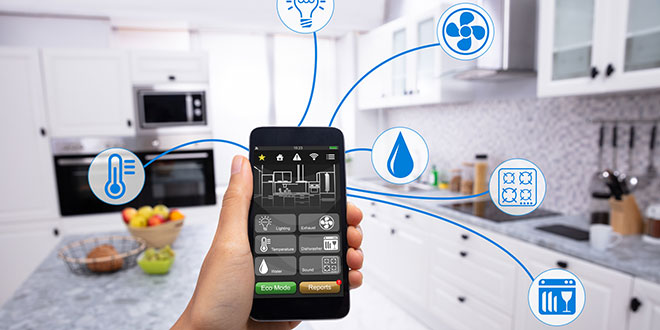The world of the Jetsons we enjoyed as kids is no longer a futuristic cartoon, out of reach. We may not have flying cars, but we have robots that vacuum and thanks to the internet of things, our homes provide many more services, like unlocking doors as we approach, turning on lights and playing music as we enter rooms, turning down the thermostat, reminding us to reorder supplies, starting dinner and making our morning cup of coffee, after raising blinds and turning on the sprinklers for the garden. We can also get alerts when windows, doors or safes are opened due to criminal activity, keeping us safe.
In 2019, smart plugs and switches were considered some of the best smart home devices, according to PC magazine. The Brilliant Control wall switch uses Wi-Fi to control various smart devices. The device turns regular lights into smart lights and has Alexa and a video intercom built in. It also connects to Sonos, Ring, Hue, SmartThings and Ecobee, allowing users to control these apps from one convenient location in the home. The Samsung SmartThings Wi-Fi Smart Plug allows users to control appliances, lamps and electronics with the SmartThings app on their smart devices, making any outlet a smart hub.
By 2022, Zion Market Research is projecting that the global smart home tech market will reach $53.45 billion. The continued improvement of Artificial Intelligence, internet speeds and connectivity combined with a growing number of consumers who are comfortable with smart devices in the home, are strong indicators that smart home technology will continue to grow.
Most of the current services, however, are available through apps for smart devices but, in the future, we may be able to create an interlinked network of services that combine multiple actions, allowing our home to function as we need without much interaction from us. For example, thermostats will turn down when you turn on your treadmill, lights will change color or tone when you press play on video games, irrigation systems will turn on when sensors determine the soil is too dry and curtains or blinds will lower when you turn on your home cinema. These services will create a house that functions without much interaction from its inhabitants. For more about the future of home automation, check out this article from nextGYN.
 Hardware Retailing The Industry's Source for Insights and Information
Hardware Retailing The Industry's Source for Insights and Information








